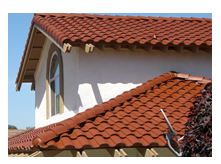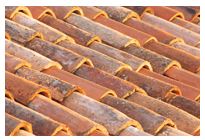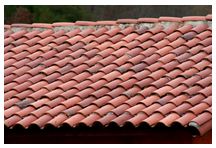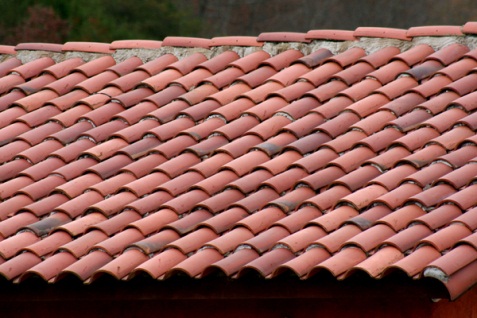Tile Roof Lifespan

The world of roofing is very competitive, causing product manufacturers to seek ways to separate themselves by offering more and more. The latest marketing trend is to advertise “lifetime” tile roofs. These “tile” roof products can be made of a variety of materials including concrete, clay and even steel. They are sold in a variety of profiles and colors, including some that are intended to simulate wood shake. They are attractive and can add to property value.
It is generally known that concrete (sidewalks) and clay (soil) are highly durable and resistant to the elements of weather including rain and sun. Concrete has been around since the Roman days, baked clay was used for shelter even longer. In Europe, clay tile roofs are everywhere on very old buildings, still performing as a roof covering. Manufacturers can use these as examples of “lifetime” roofs. What does “lifetime” really mean? Sometimes it means useful life of the product or even life of the building itself.
Recently a 30 year old CID project in Orange County discovered that they had spent over $400,000 making repairs to their “lifetime concrete tile” roofs. Some members who purchased their homes new from the builder located the original sales brochure that clearly stated “lifetime concrete tile roofs”. They were quite upset to find the association had a Zero reserve balance for Tile Roof Replacement. Their special assessment was about $12,000.00 per unit, payable in 6 months; 100% due before project start. The wood replacement, only discoverable during the project, almost doubled the project cost.
Regrettably, more and more CID properties are finding themselves in the position of low (or no) reserve funds for roof replacement, resulting in a large cash assessment or increased monthly contribution. Sometimes board members pride themselves in stating “we have never raised the member assessment on this property”. What they have done is passed their financial responsibility onto the next owner. Is that really fair?
Older Tile Roofs: Is it time for Replacement?

If your association has tile roofs that are over 25 years old, they should be carefully evaluated by a roof professional to establish the remaining life and to start into a roof plan. Your roofs will at minimum need a tile re-set with all new underlayment and flashings, reusing the old tile. That of course depends on whether the style and color are available to replace the 30% that are likely to get broken in the process. If not, then a new tile product should be considered. Either way you will be facing the expense of major roofing work in the next 2-5 years. The good news is you have time to prepare for it.
So, is there a truly “lifetime” tile roof? The answer is: it depends on the definition.
The critical components of weatherproofing are the underlayment and flashings.

Most tile roofs are installed with minimum standards including the lowest grades of underlayment and flashings. Standard underlayment has a general useful life of about 25 years, depending on climate exposure. For example, in the desert areas, expected life is closer to 15-20 years due to excessive heat. In the coastal areas, it can be up to about 30 years. In the desert climate rusting of flashings is not as serious a problem as in coastal.
Unfortunately Association directors simply “don’t know what they don’t know”. They are fully dependent on what roofers tell them, or the tile manufacturer’s brochure. They really need to obtain accurate, independent information before making a critical decision to spend their member’s hard-earned money. Life-cycle costing is a very important element of that decision. Association Directors should always remember they are spending other s money, and apply the business judgment rule.
All replacement roofs should be custom designed for the climate and with consideration of life-cycle costing. Often a 25% higher investment will result in a 200% life of the tile roof system. Roof design is a skill that requires special training and experience. Roof design and the budget should be fully explored 3-5 years before a roof replacement project is anticipated. That gives adequate time for funding and project planning.
What about that “lifetime tile roof”. The concrete or clay itself can last 100 years or more, but the real weatherproofing elements have a shorter useful life. So, the closest we can come to that “lifetime” goal is upgraded underlayment and flashings, and a top quality installation of them. Carefully review the product warranties for all materials especially the exclusions.
Just as roofs are not all the same, contractors and their crews are not all equal either. Choose them carefully and provide them with custom specifications and a detailed contract. Then obtain some level of quality assurance monitoring before payment. You can’t quite get to “lifetime”, but it is possible to approach a 50 year life tile roof.
